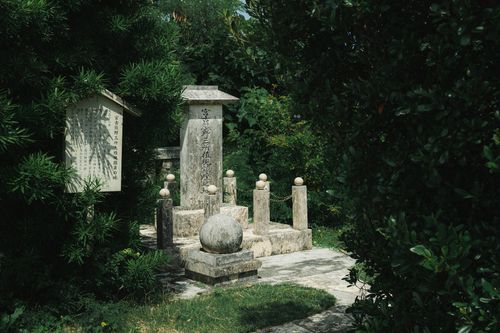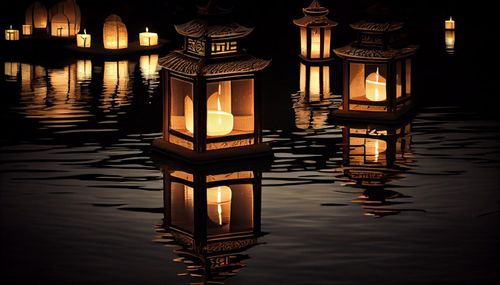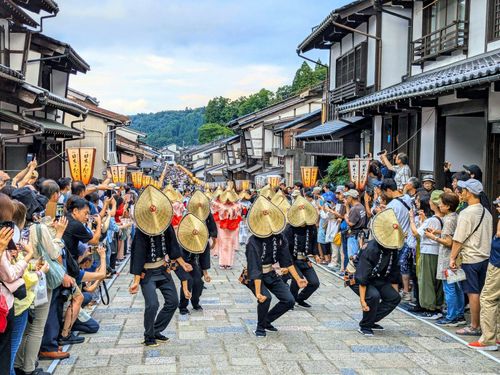Deneb Rodríguez•Oct 13, 2024
Traveling to Japan in July or August? Let us tell you this is a great time to celebrate Obon Festival in Japan with locals. Immerse yourself in the traditional ceremonies and rituals around the festival. Be ready to show your ancestors during these days!

Photo by Krisna Yuda on Unsplash
What is the Obon Festival?
Exploring the History and Origins of Obon
This Buddhist festival has been celebrated for over 500 years. It comes from the story of Maha Maudgalyayana. Mokuren was a disciple of Buddha who saw his dead mother. She was in the Realm of Hungry Ghosts and was suffering. Buddha told him to make offerings to monks. Then, on the 15th day of the 7th month, he followed Buddha’s advice, and his mother was finally released from her suffering. Mokuren danced with joy. This is the origin of the Obon dance.
The Cultural Significance of Obon in Japan
Obon is a Buddhist event to honor ancestors. It is believed that their spirits return to visit relatives. People hang lanterns outside their houses to guide the spirits of their ancestors. People often dance, visit graves, and make food offerings at house altars.
When is Obon Celebrated?
Traditional Dates and Regional Variations
Obon is celebrated on the 15th day of the 7th month of the year. This varies depending on the calendar used. The official dates are 13-15 August, while in other places it is between 13-15 July.
Key Dates for Obon Celebrations
- “Shichigatsu Bon” (Bon in July): Based on the solar calendar and celebrated around 15 July in eastern Japan (Kantō regions such as Tokyo, Yokohama, and the Tohoku region), coinciding with Chūgen.
- “Hachigatsu Bon" (Bon in August): Based on the lunar calendar and celebrated around the 15th of August. It is the most commonly celebrated time.
- “Kyu Bon” (Old Bon): Celebrated on the 15th day of the seventh month of the lunar calendar, in areas like the northern part of the Kantō region, Chūgoku region, Shikoku, and the Okinawa Prefecture.
Traditional Obon Rituals and Practices
The Art of Bon Odori: Traditional Obon Dances
Bon Odori is a type of dance done during Obon. The original dance performance welcomes the spirits of the dead. It varies in style from region to region. Dancers perform on a yagura stage in light cotton kimonos.
Lantern Lighting: Guiding the Spirits Home
Floating lanterns are becoming more popular. The lanterns float down a river to the sea to send their ancestors’ spirits into the sky. Customs vary from region to region.
Visiting Ancestral Graves: Paying Respect
Visiting graves (Ohakamairi) is an important part of Obon, a time to honor and show respect for the ancestors. Families often light incense, clean the grave, pray, and offer food and flowers.

Image by vecstock on Freepik
Modern Obon Celebrations
How Contemporary Japan Observes Obon
The way people honor their ancestors has changed over time. Nowadays, Obon celebrations mix traditional rituals with modern practices. For example:
- Home altars usually have fruit, flowers, and obon dango. In Japan today, busy families make offerings to show respect. Some families offer snacks, drinks, or items their ancestors enjoyed.
- Many families in big cities like Tokyo and Osaka have moved away from their ancestral homes but still celebrate Obon. Some visit cemeteries near their homes instead of graves.
- Some Bon Odori events in cities use modern music to attract younger people. City Bon Odori festivals attract big crowds with traditional dances, food, and fireworks.
Festivals, Parades, and Community Events
- Spirit Boat Procession in Nagasaki: Families built a spirit boat to send deceased relatives to the spirit world. They would take the boat to the sea and burn it. Nowadays, families often join together to make big boats. At the sea, people set fireworks to keep evil spirits away while the ancestors are on their journey.
- Gujo Odori in Gifu: One of Japan’s three most important festivals, from July to September. The festival has 10 dances from sunset to sunrise. Singers and musicians sit on a small float while dancers dance around it. Many people come to Gifu to see and take part in the dances.
- Gozan no Okuribi in Kyoto: Known for its okuribi fire display. Bonfires are lit in the shape of kanji characters carved into the mountains around Kyoto and can be seen from anywhere in the city. Also, people often go to popular viewing spots to enjoy the view and festival food.

Photo by Daniel Beauchamp on Unsplash
Travel Tips and Cultural Etiquette
How to Participate Respectfully as a Visitor
- Observe and Follow Local Customs: Watch how locals participate in rituals, especially at cemeteries and temples. Follow their lead in offering prayers, lighting incense, and bowing.
- Dress Modestly: Wear respectful clothing, especially if attending formal ceremonies or visiting graves. For example, if you attend a Bon Odori, traditional yukata (summer kimono) is a fun, respectful option.
- Respect Offerings and Altars: Do not touch or disturb food offerings, incense, or personal items placed at graves or home altars.
- Show Gratitude: Thank locals for allowing you to observe or participate in the festival, acknowledging the cultural significance of the event.
Stay Connected with Yoho Mobile
Stay connected at any time and place with an eSIM, and share your social media network your experience at the Obon Festival in Japan. Yoho Mobile provides the best eSIM to suit all your travel needs. Don’t miss the opportunity.
🎁 Special Discount for Our Readers!
As a special treat for our readers, Yoho Mobile is offering an exclusive discount! Use our coupon code “YOHOREADERSAVE” to get your first order for FREE! Don’t miss out on this opportunity to stay connected affordably while exploring China.
